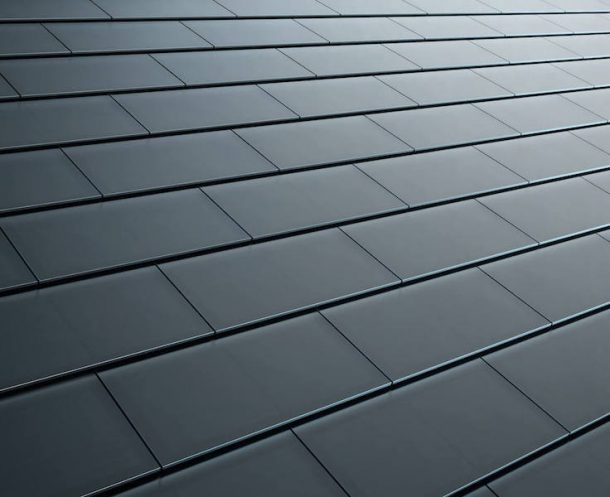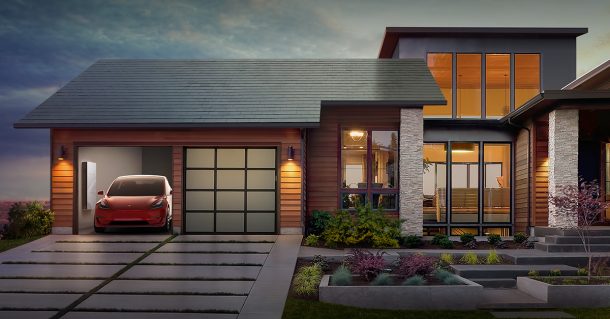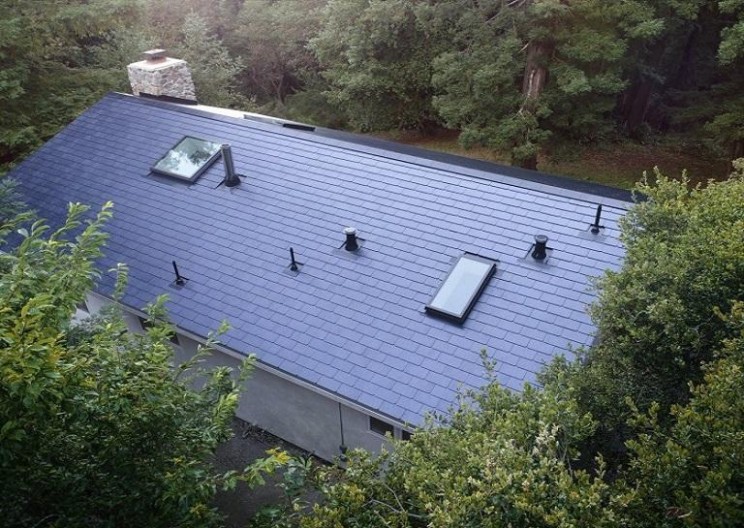People have been waiting for a long time for Tesla to finally start its production of the promised solar roof tiles. The customers who reserved the tiles from Tesla have reported that their homes have started being surveyed before the tiles are delivered.
These miraculous solar roof tiles from Tesla generate electricity without the need for additional PV panels. These tiles were first revealed back in 2016 when Elon Musk suggested that the first installation could happen as soon as the summer of 2017. But, as is common in some Tesla products, there are hiccups in production and the timeline gets pushed forward. About the delay, Musk said, “it just takes a little while to get this behemoth rolling.”
The tiles were installed at dozens of Tesla employees as a part of the testing phase and the customers who wanted the tiles in their own homes were asked to deposit $1,000 via the website when orders opened back in May. These orders are now finally going to be completed in the coming months.

What makes these tiles even more attractive is that according to Tesla, these tiles cost between 10 and 15 % less than regular solar panels. SolarCity co-founder and CTO Peter Rive broke down the costs of the tiles saying that inactive tiles would cost about $11 per tile, and active (solar) tiles would cost about $42 per tile.
This is in accordance with the description that Tesla gave on how the roofs will be a combination of active and inactive tiles based on the part of the roof that gets maximum sunlight. The estimated cost for solar roof tiles is $21.85 per square foot having 35% active solar tiles.

Tesla is teaming up with their long-term collaborator, Panasonic to manufacture the solar system at the Buffalo factory. More than 500 workers are dedicated to the project at the site according to the company. Tesla has expressed its hope to achieve more than 1 gigawatt of cell and module production in Buffalo, though no timelines have been publicly given to meet this goal. Tesla confirmed both models of the tiles, Textured and Smooth, began production in the last few months.
Are these tiles the next big thing from Tesla or will they prove to be inefficient? We will know in a couple of months. You can check out the technology in the video below:
https://www.youtube.com/watch?v=OTOnclnxAWg



INSULLA cool Roof tiles is designed in such a way that it reflects more sunlight and absorbs less heat than a standard roof tile. Nearly any type of building can benefit from a cool tile. Just as wearing light-colored clothing can help keep you cool on a sunny day, cool roofs material is designed to reflect more sunlight and absorb less heat than a standard roof.
Insulla Cool roofs reflect and emit the suns heat instead of absorbing it. By reflecting the heat of the sun instead of absorbing it, they keep buildings cooler and reduce the amount of energy needed to cool them, in turn reducing the use of air conditioners and electricity consumption.
TEMPERATURE DECREASE:
Can Insulla cool roof tiles help in decreasing roof temperature?
This is measured by two properties, solar reflectance and thermal emittance. Both properties are measured from 0 to 1; the higher the value, the cooler the roof. Standard or dark roofs can reach temperatures up to 150°F or more in the summer sun. Insulla cool roof tile under the same conditions could stay 50°F cooler and save energy and money by using less air conditioning. Insulla roof tiles helps in reducing bills by decreasing air conditioning needs, decreases roof temperature which in turn may extend roof service life. Advanced technology Shell Lime based Cool Grit Granules along with Aerogel composite; it has the power to lower surface temperature by up to 20º. Total solar reflectance value i.e SRI >95%.
WHITE:
How does the color of our tiles affect the roof temperature?
Insulla white roof tile offers a number of advantages; Roofs are the elements of buildings most exposed to high levels of ultra-violet light and solar radiation. Most color pigments tend to mellow to varying degrees when subject to this exposure. Added to this, the roof naturally catches the majority of fall-out pollutants and dust from the atmosphere. Because the heat is reflected, attic rooms and other spaces directly beneath the roof remain cooler, so in many cases air conditioning is no longer required. In urban areas, white roofs also help lower smog levels by lowering local temperatures, which tend to be higher due to the large proportion of paved surfaces.